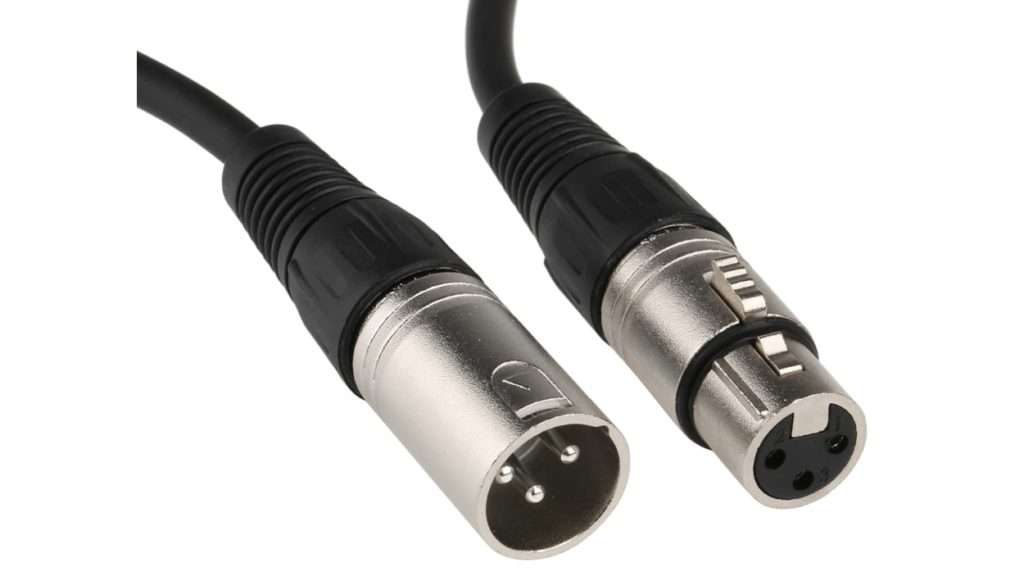In the world of audio production we rely on good connection types to carry out our work effectively.
The truth is, we all want a good audio system that gives us a good experience whether when we are producing music, listening to our favorite podcast or watching a movie or simply listening to music.
The various connection types that exist offer their own unique style in the transmission of audio signals.
One of the two common connection types that are discussed often times are XLR and Jack.
Often times people ask which is better between XLR and Jack.
This post will therefore discuss this so you have a clearer understanding.
With that said, Is XLR better than Jack?
XLR offers better optimal audio quality which makes it better than Jack. This is why XLR cables are best for radio, recording studios and live stage audio because they offer a balanced signal setup that reduces noise, making the audio output clean. XLR is the solution for professional audio production and processing because the goal is always clean audio output without noise.
XLR Cables

In order to get good audio quality you should get an XLR cable. Because It offers a balanced signal setup that reduces noise and makes sound clean. This is important in situations where audio quality is the goal.
Like recording studios, where live recorded vocal signals have to travel through cables in order to be digitally transferred into your computer.
The same goes for radio which basically relies on good quality cable connections to capture and transmit audio signals live.
Another cable type that is useful when good audio quality is the goal is the TRS or Tip Ring Sleeve cable connectors are that are as similarly balanced as XLRs and can actually he good substitutes depending on the situation.
Balanced sound quality that you can get from XLR is a result of its use of three channels— namely the negative, positive, and the ground.
The two channels can be used for unbalanced stereo signals (no noise cancellation), balanced mono signals (with (Common Mode Rejection) and finally the headphone with microphone setup of which the ground can be used for the mic signal.
The most notable advantage that XLR has over jack is that it delivers a balanced signal.
This means that it is less susceptible to noise because of Common Mode Rejection.
Common Mode Rejection delivers the signal in the wire’s two polarized legs in such a way that when the noise occurs, the signal simply switches the polarity of the left and right leg where the signal is much clearer, leading to a clean, noiseless signal.
This ability of XLR to automatically evade noise makes it even more useful in many applications that call for cleaner audio output with little to no noise interference.
One of the other extra benefits of using XLR cables is that you can run them to over 20 feet without worrying about noise, which is useful in live stage setups.
Jack Cables
Jack plugs or cables are pretty affordable and they are a connection type that is probably on your phone, but their aren’t a great alternative to XLR.
Most audio professionals like myself will advise you to go for XLR or TRS cables because they are much better suited to handling audio.
Jack plus or cables are pretty limited because they have unbalanced connections, which are susceptible to noise and electromagnetic interference.
This becomes very problematic if you’re trying to get good quality audio free of noise.
There are many uses for balanced connections which is why XLR and TRS are your best bet if you’re an audio professional.
For example, If you’re using a high-level instrument, it’s best to go for XLR. However, if you happen to have TRS jack cables, TRS can serve as a valid balanced signal alternative to XLR.
Final Thoughts
When it comes to XLR vs. Jack.
The fact is, XLR offers a more balanced connection with its two polarized legs and ground while a jack is used for a more unbalanced connection with its two-channel ground and signal.
The polarized legs and ground allow XLRs to be able to evade noise.
Electromagnetic interference and noise can end up ruining your signal from an unbalanced connection, such as the hum and static you get when plugging your guitar into an amplifier. It’s not really a big issue for a high-signal type of instrument like a guitar.
However, low-level signals like a microphone could have significant sound quality downgrades if you use a jack instead of a balanced XLR which would inherently lead to low quality recordings.
As a professional audio engineer, audio quality is at the core of my work which is why I recommend XLR cables over Jack. Furthermore, a good alternative for XLR is the TRS cable connection.